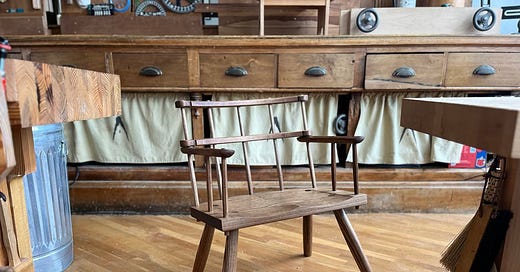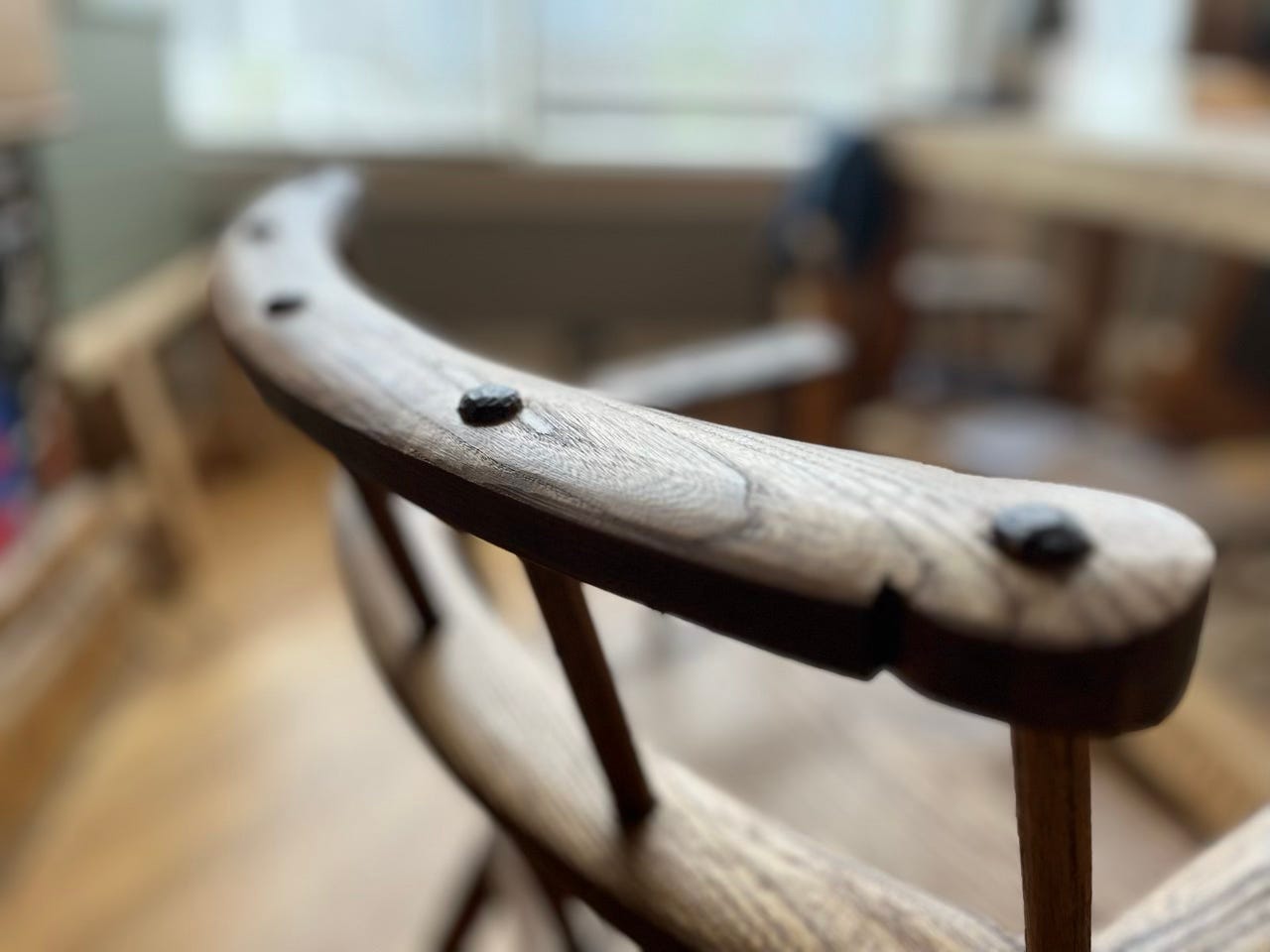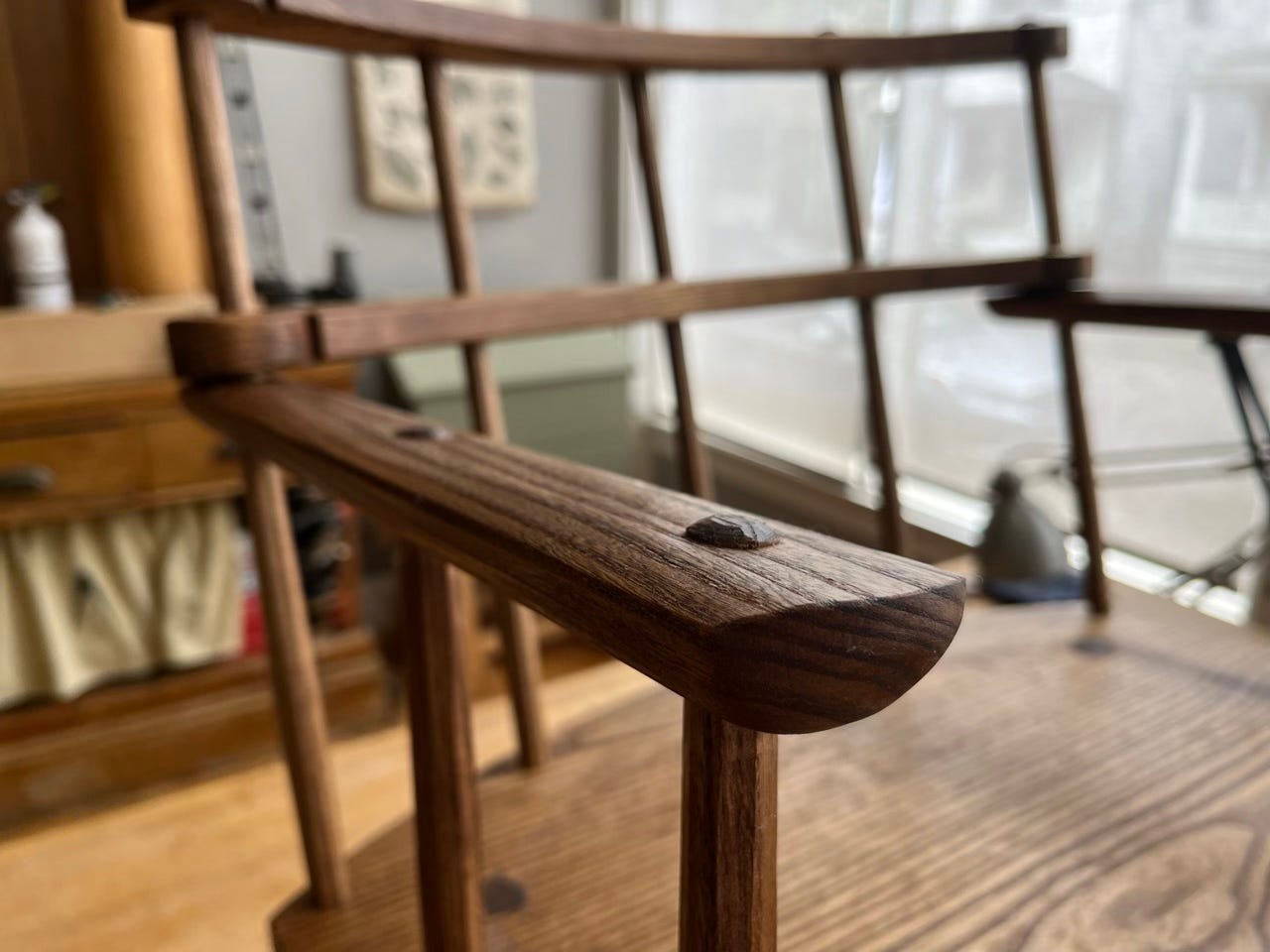Kale Vogt
April 28, 2025
Sometimes you build something that fights you at every step. Physically and mentally, it challenges you and beats the question “why” into you over and over again until it keeps you up at night. No matter what you do, you can’t seem to make this project sing to you — but you have to finish it.
(I’m writing this mostly for myself to hear— to remind myself that even though challenging projects will come along, kinder projects will follow.)
This was my experience while building my third apprenticeship (and most recent) chair (though perhaps in a less dramatic fashion).
My initial plan was this: Use Chris’s “peasant chair” design as my main inspiration. I love the folk look of the peasant chair, and the concept of the “sandwich drilling” technique Chris used when building it. Both the design and technique of the chair build were new to me.
But because that wasn’t enough newness for me, I wanted to make a few design changes. The most impactful of those: widening of the seat from 20" to 24".
Little did I know this one design alteration would begin a domino effect of adaptations that would carry on to the very end of the project.
(To all the experienced woodworkers shaking their heads right now, please cut me some slack. This naive apprentice had to learn this lesson the hard way.)
I won’t bore you by explaining all the revisions (backrest length, stick and leg placement, etc.) that had to be made due to my “innocent” design change. The moral of this story isn’t to serve as a reminder for myself to think twice and heavily consider before making any sudden design changes. The moral of this story is to think three times, maybe even four, before when pondering even the smallest of design choices — and then make them anyway.
When all changes were said and done, I had widened the seat by 4", thickened the legs by at least 1/4" and the seat was saddled. (Chris’s original peasant chair design does not include a saddled seat.)
Beyond all the adjustments made to this chair, there was another hill in my way that I couldn’t seem to get over: the chair never sang to me.
In the midst of all my design changes, I didn’t have the forethought to take into the account how these changes would affect basic design principles like proportion or weight distribution.
“Maybe,” I thought, “when I level the legs that will help….”
Nope.
“OK, I just need to shape the arms and backrests then it’ll come to life.”
Hardly.
I don’t mean to dog myself here. Just because I didn’t have the experience to make informed design alterations doesn’t mean I’m going to curl up in a ball under my bench and suck my thumb. (Although, a year ago this may have been true.)
I don’t hate this chair; there are aspects of it that I really enjoy. And to be honest, I’m happy to have made the “mistakes” I made. While the end result doesn’t match my initial vision, I have this weird Stockholm-y Syndrome attachment to it. Out of all my chairs (seven now) I have easily put the most thought and deliberation into this one. And because of that, it has taught me the most lessons.
I won’t be selling this chair; I’ll be using it. The chair will sit in the living room corner of my apartment to be used for book reading and guest seating. And every time I take a seat it will tell me to think three times, maybe even four, the next time I want to make design changes – then make them anyway.
Keep reading with a 7-day free trial
Subscribe to The Anarchist's Apprentice to keep reading this post and get 7 days of free access to the full post archives.






